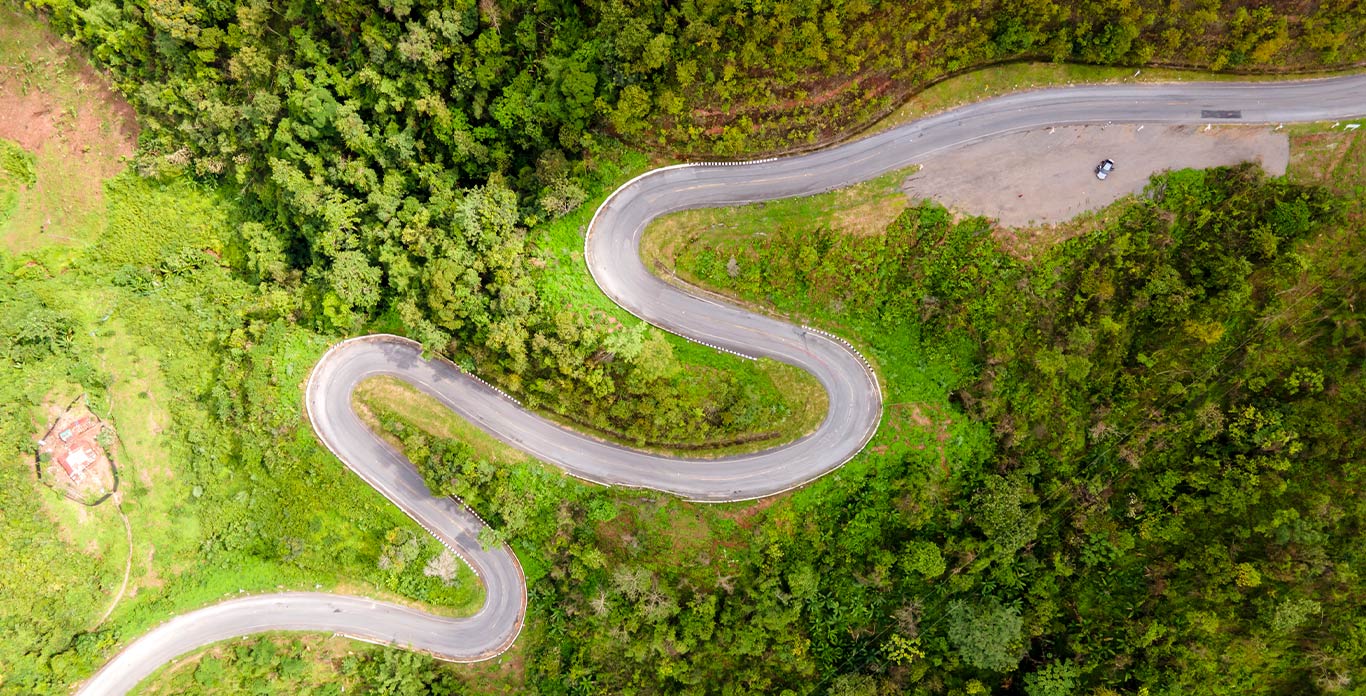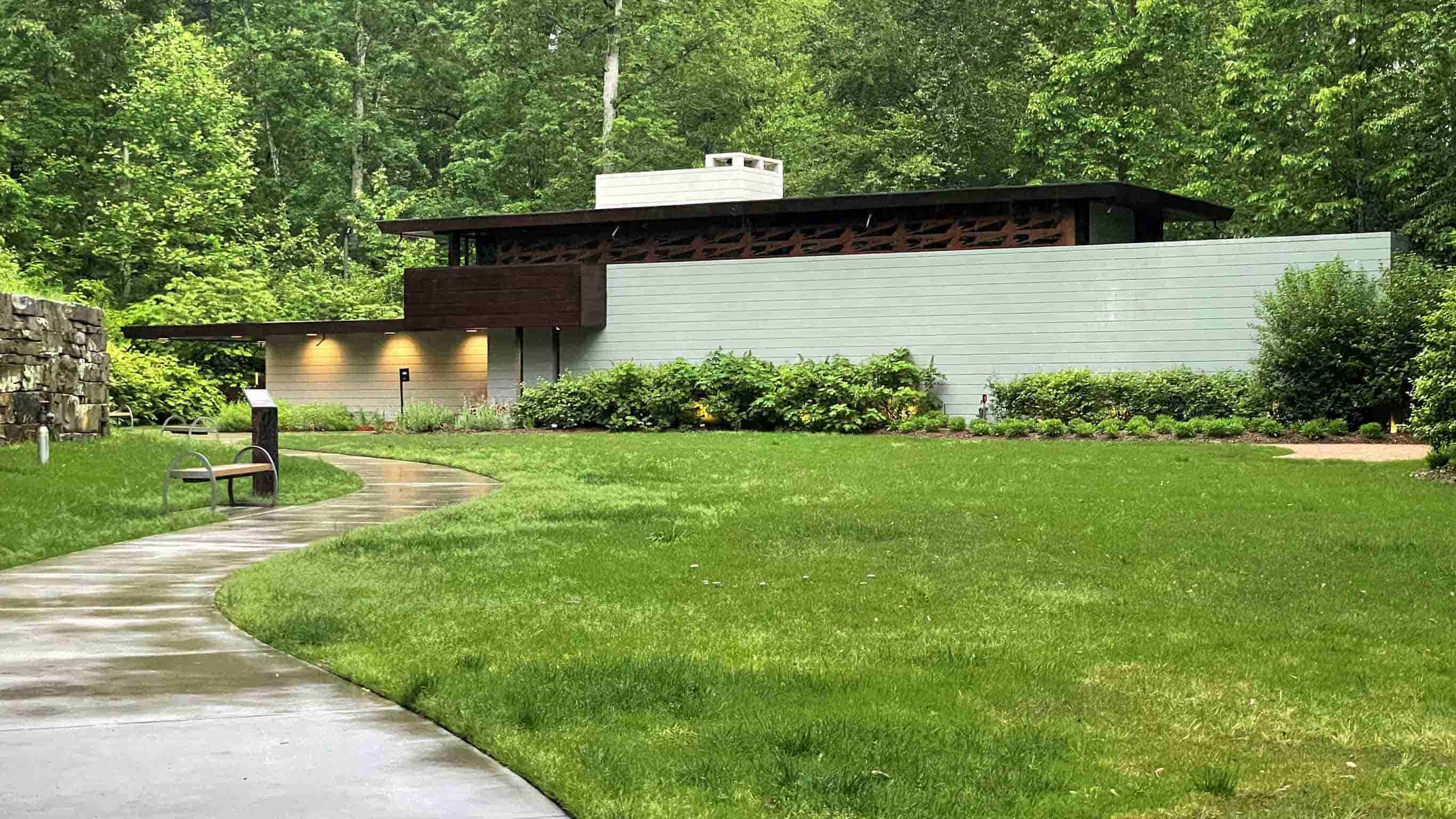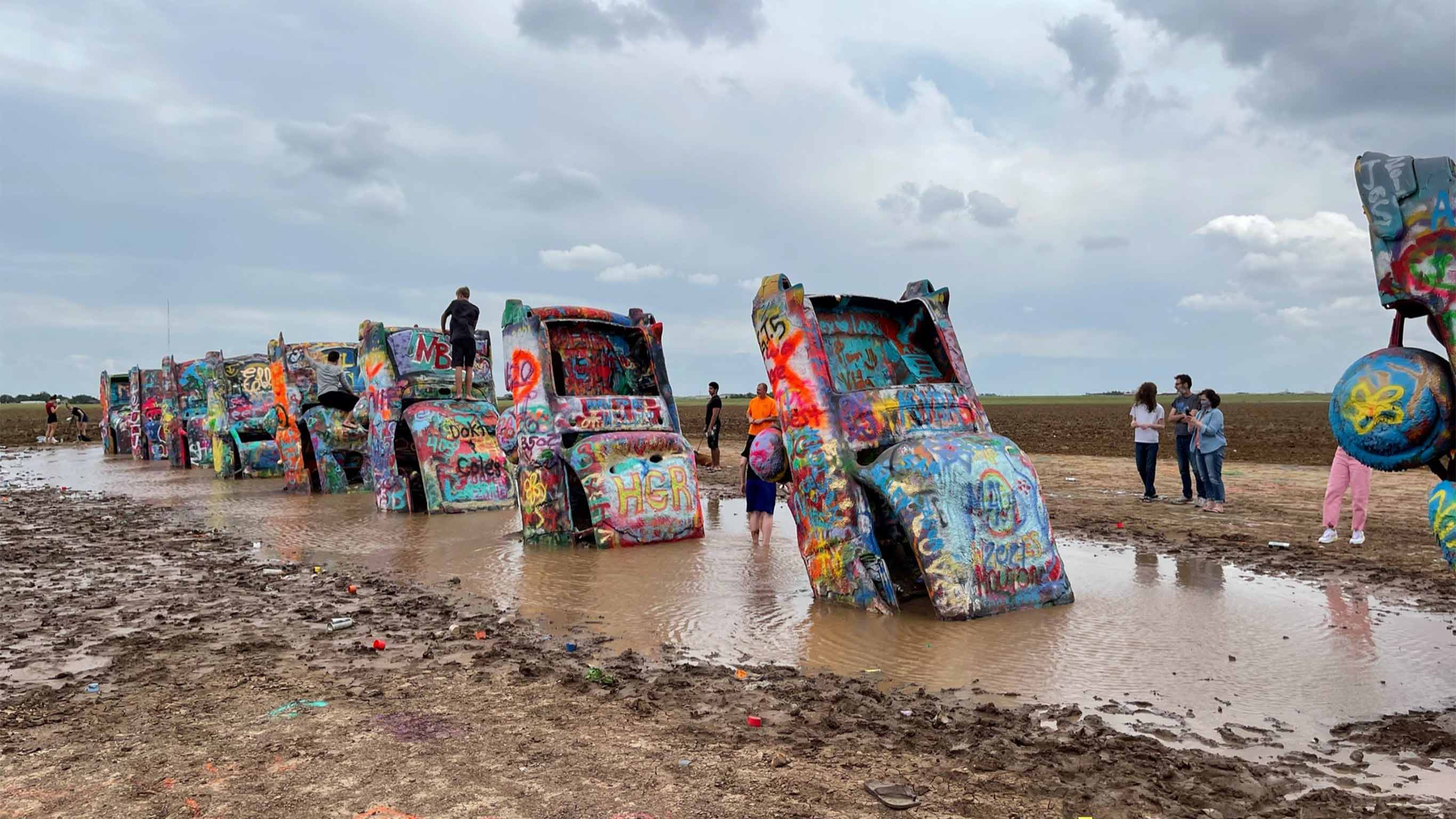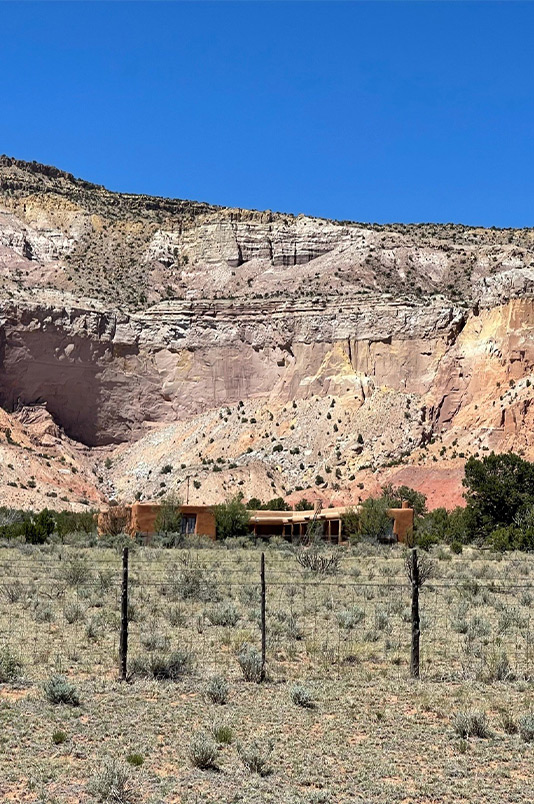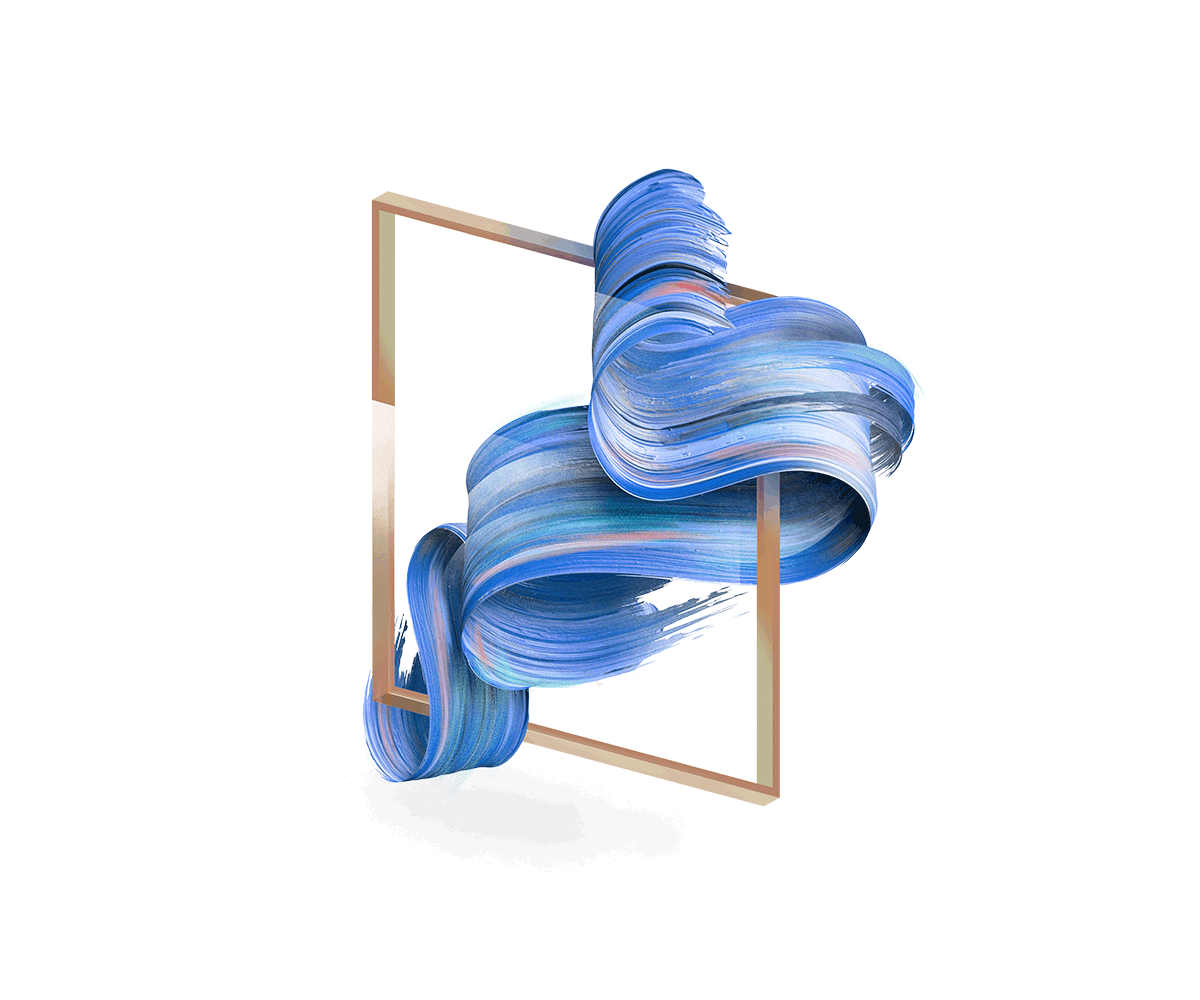My journey continued with a stop in Bartlesville, OK, which is about 3 hours northwest of Crystal Bridges. After having experienced Wright’s Usonian home, I had the chance to see Wright’s only fully realized skyscraper, Price Tower. Commissioned by Harold C. Price, founder of H.C. Price Company, a local oil pipeline and chemical firm, the tower was completed in 1956. Built on prairie land, Wright referred to it as “the tree that escaped the crowded forest.”

© 2021 Frank Lloyd Wright Foundation. All Rights Reserved. Licensed by Artist Rights Society.
In the 2000s, the Price Tower was remodeled, and eight floors of the tower were turned into the Inn at Price Tower with a restaurant-bar. If you’re a Wright enthusiast with an adventurous spirit, I highly recommend spending a night at the tower.

© 2021 Frank Lloyd Wright Foundation. All Rights Reserved. Licensed by Artist Rights Society. Lobby, Inn at Price Tower
My next stop was a bit off the beaten path: Amarillo in the Texas Panhandle to see Amarillo Ramp, Robert Smithson’s last work. Smithson, one of the leaders of the land art movement, died in a plane crash while surveying the site. The piece was finished posthumously by his widow Nancy Holt, Richard Serra, and Tony Shafrazi.
Although the work is on private property, I was able to book a tour through the Holt/Smithson Foundation. I met with a guide in town and followed him out to the ramp. The journey takes about an hour and half round trip and the last 15 miles are on an unpaved rocky road, where we had to stop for cattle crossings.
The guide is wonderfully friendly and shares a lot of stories about the land, the earthwork, and the history of Amarillo. He gives you a lot of time to have your own experience with the artwork surrounded by the indigenous vegetation.
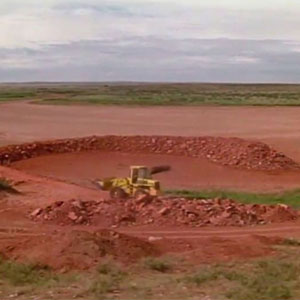
© 2021 Holt/Smithson Foundation / Licensed by VAGA at Artists Rights Society (ARS), NY. Distributed by Electronic Arts Intermix. Still from Nancy Holt, The Making of Amarillo Ramp (1973/2013) 16 mm film; Color, sound. Duration: 31 minutes, 52 seconds
If you’d like to learn more there’s an excellent documentary made by Nancy Holt, The Making of Amarillo Ramp. This work has inspired many artists, including Lee Ranaldo, guitarist of the alternative rock band Sonic Youth, who in the mid-1990s wrote the song Amarillo Ramp (for Robert Smithson).
Close by Smithson’s Amarillo Ramp is Cadillac Ranch, which you can catch a glimpse of along I-40. It’s an art installation of 10 half-buried Cadillacs, nose-first in the ground created in 1974.


